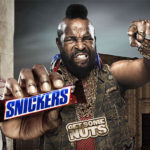There’s a LOT of advertising out there.
We see it every day, in saturated abundance and in many forms. Physical ads, digital ads, ads you listen to, ads you see… our senses are being bombarded with marketing messages every day from all directions.
And if we’re rating those ads on their sales power alone, most of them are… well… pretty bad.
It’s worth nothing that for the big brands with the most marketing spend, keeping their name on the tips of people’s tongues is enough. Coke and McDonald’s hardly have to sell their product anymore, or explain what they do. They just need to spread their name and logo to maintain what they’ve already put the hard work into creating.
However, using this strategy is career suicide more often than for small to medium business owners. You’re not Apple yet, so there’s still selling to be done. Persuasion and education still need to occur. You still need to answer the crucial question for your prospects: “What’s in it for me?”
Look around you the next time you’re driving. Ask yourself these questions the next time you see a business van or other vehicle:
Could their slogan also work for their competitors, or even businesses outside of the niche?Do I know exactly what they do?Do I know what separates them from their competitors?Do I feel compelled to engage with their brand?Is there a specific, clear and easily actionable call to action?What’s in it for me?
Chances are, you’ll find that most marketing collateral out there fails to address these questions. More often than not, you’ll simply see a logo, a statement about how long they’ve been in business and a phone number.
So, what would a good ad look like? What would strong and persuasive marketing collateral do? What separates the compelling from the lacklustre?
Good advertisements immediately answer the crucial questions. They, as legendary 1950s copywriter Robert Collier would put it, enter the conversation already happening in the prospect’s mind. They tell you what they can do for you, why you should care, and how to easily engage. They tell you what separates them from their competitors, and why they’re the best choice.
The difference between good and bad advertising can be life-or-death for your company. Amazing products have flopped simply because they weren’t marketed correctly. Unfortunately, the opposite is also true – inferior products often trump their superiors because they are marketed better.
Getting it right takes quite a bit of manoeuvring. First, you need to conduct thorough market research that determines what words, colours and images your ideal prospects respond to. That is, of course, after you’ve defined your ideal prospect – also a rigorous exercise.
Then, you create the message. Considered and careful marketing is a science. Through research and testing, you can ensure that your message will hit, leading to sales and revenue for your business.
There’s a lot that goes into developing optimal messages and distributing them through the optimal mediums. It takes time, experience and skill. On top of that, it takes a profound knowledge of human behaviour and a thorough understanding of the marketing algorithms that lead to profit for everyone.
Does your messaging answer the crucial questions? We’ll tell you – for free.




